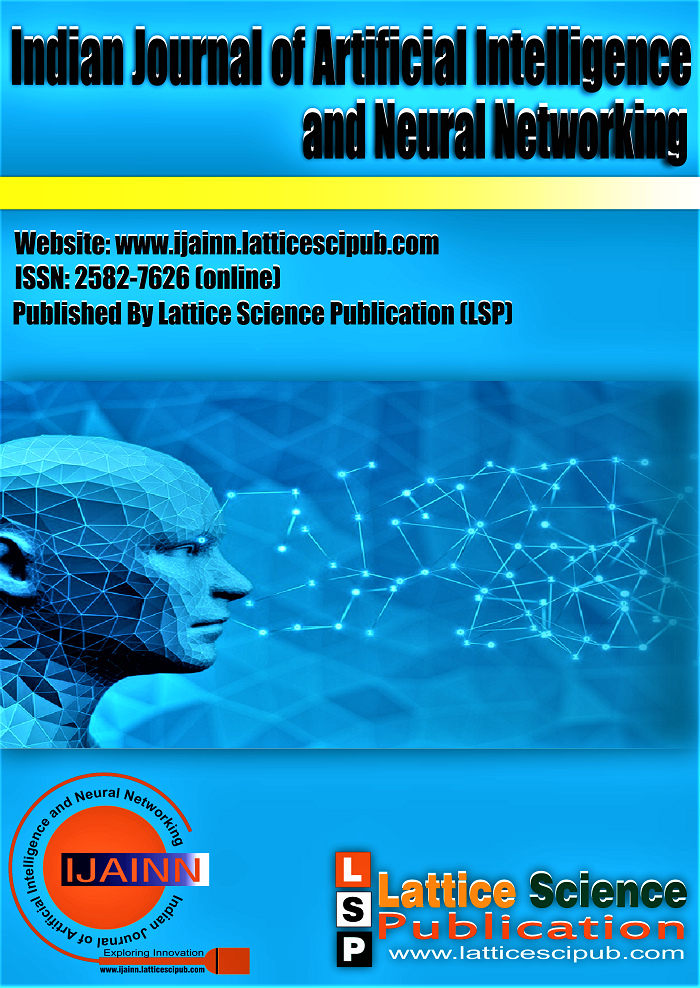Prediction of Cybercrime using the Avinashak Algorithm
Main Article Content
Abstract
The detection and prevention of phishing websites continue to be major obstacles in the continually changing field of cybersecurity. Phishing attacks continue to use sophisticated methods to exploit user vulnerabilities, thus it is vital to predict and identify these malicious websites. Traditional techniques for detecting phishing sites frequently rely on rule-based and domain-based approaches, which might not adequately capture the dynamic nature of phishing attacks. The Avinashak Crime Prediction Algorithm appears to be a proprietary or specialized algorithm not widely known in the machine learning community. Its details and working principles are not publicly available, which makes it challenging to provide a detailed explanation without additional information.
Downloads
Article Details

This work is licensed under a Creative Commons Attribution-NonCommercial-NoDerivatives 4.0 International License.
How to Cite
References
Aljawarneh, S., Yassein, M. B., & Al-jarrah, O. Y. (2019). A hybrid intelligent system for detecting phishing websites. Journal of King Saud University-Computer and Information Sciences.
Aydın, M. A., & Şahin, C. (2019). Machine learning and deep learning models for network intrusion detection systems. IEEE Access, 7, 67779-67788. https://doi.org/10.1109/ACCESS.2019.2893871
Yadav, K., Chouhan, D. S., & Mohapatra, D. P. (2019). A survey of malware detection techniques. Journal of Network and Computer Applications, 60, 19-31. https://doi.org/10.1016/j.jnca.2015.11.016
Jagatic, T. N., Johnson, N. A., Jakobsson, M., & Menczer, F. (2019). Social phishing. Communications of the ACM, 50(10), 94-100. https://doi.org/10.1145/1290958.1290968
Mahjabeen, H., & Hu, J. (2019). A survey of big data architectures and machine learning algorithms in cybersecurity. Journal of King Saud University-Computer and Information Sciences.
Alshahrani, M., Hu, J., & Rehman, M. H. (2019). Machine learning in phishing detection: A comprehensive review. IEEE Access, 7, 73662- 73676.
Khan, I., & Salah, K. (2019). Deep learning for cyber threat intelligence: A survey. IEEE Access, 7, 21171-21184.
Fu, Z., Wu, Y., Wang, D., & Li, X. (2019). A novel intrusion detection model based on generative adversarial networks. IEEE Access, 7, 97739-97749.
Sood, A. K., Enbody, R. J., & Bansal, A. (2019). Building machine learning models for phishing detection. Journal of Computer Virology and Hacking Techniques, 15(4), 275-287.
Raza, S., Kanwal, S., & Nazir, M. (2019). A deep learning approach for network intrusion detection system. Journal of Ambient Intelligence and Humanized Computing, 10(10), 4059-4071.
Khyati, & Sohal, Dr. J. S. (2019). A Hybrid Intelligent DecisionMaking System for Navigation with Optimized Performance. In International Journal of Innovative Technology and Exploring Engineering (Vol. 8, Issue 10, pp. 2510–2514). https://doi.org/10.35940/ijitee.j9555.0881019 Prediction of Cybercrime using the Avinashak Algorithm 10 Retrieval Number: 100.1/ijainn.A1078124123 DOI:10.54105/ijainn.A1078.124123 Journal Website: www.ijainn.latticescipub.com Published By: Lattice Science Publication (LSP) © Copyright: All rights reserved.
Jebamalar, J. A., & Kumar, Dr. A. S. (2019). PM2.5 Prediction using Machine Learning Hybrid Model for Smart Health. In International Journal of Engineering and Advanced Technology (Vol. 9, Issue 1, pp. 6500–6505). https://doi.org/10.35940/ijeat.a1187.109119
Mansoori, F. A., & Mishra, Dr. A. (2023). Design of Intelligent Technique for Abnormality Detection in MRI Brain Images. In International Journal of Recent Technology and Engineering (IJRTE) (Vol. 11, Issue 5, pp. 77–85). https://doi.org/10.35940/ijrte.e7433.0111523
Brahamne, P., Chawla, Assoc. Prof. M. P. S., & Verma, Dr. H. K. (2023). Optimal Sizing of Hybrid Renewable Energy System using Manta Ray Foraging Technique. In International Journal of Emerging Science and Engineering (Vol. 11, Issue 3, pp. 8–16). https://doi.org/10.35940/ijese.c2545.0211323
Abualkas, Y. M. A., & Bhaskari, D. L. (2023). Methodologies for Predicting Cybersecurity Incidents. In Indian Journal of Cryptography and Network Security (Vol. 3, Issue 1, pp. 1–8). https://doi.org/10.54105/ijcns.f3677.053123





